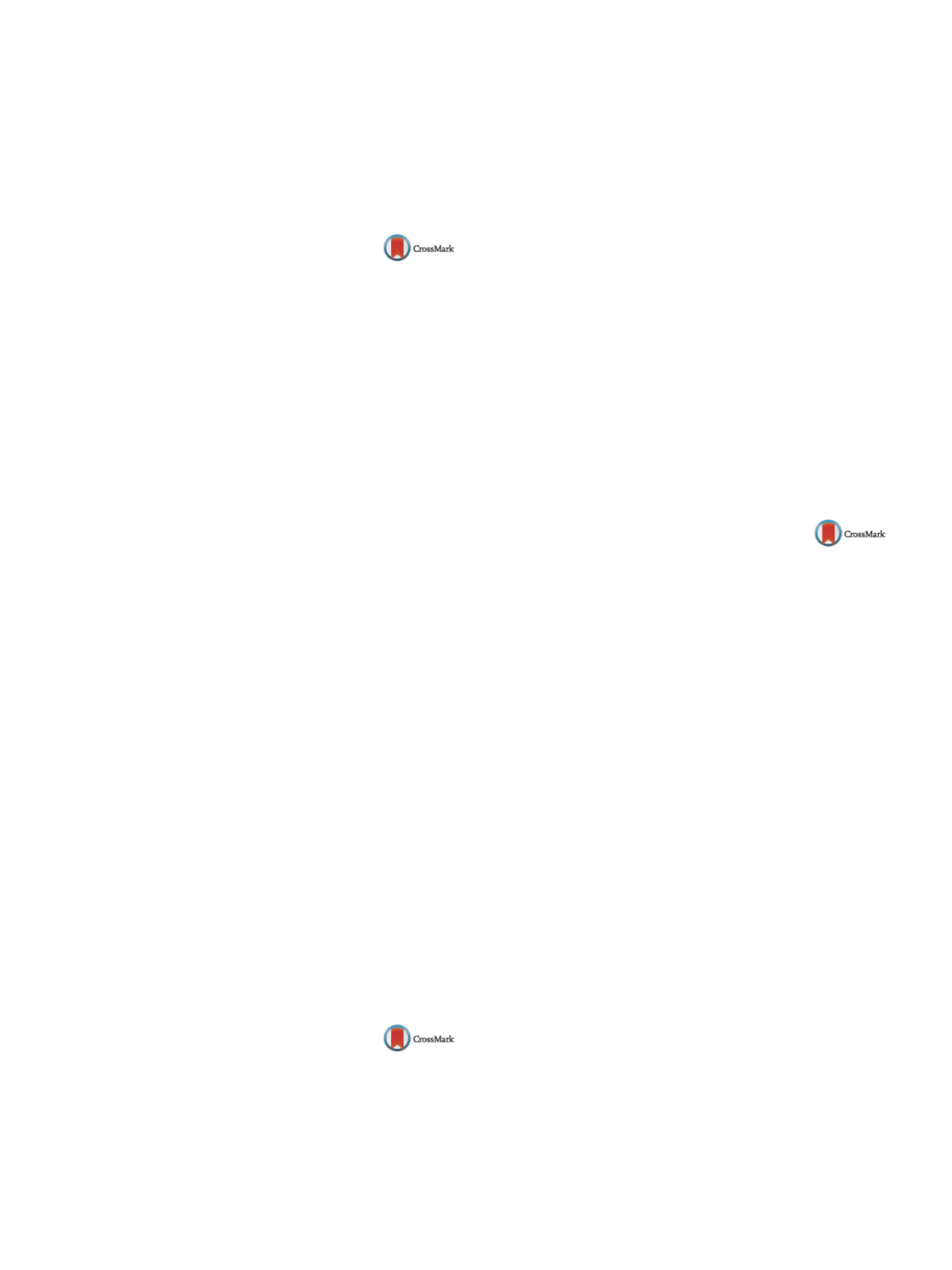

S322
25th European Congress of Psychiatry / European Psychiatry 41S (2017) S303–S364
Conclusion
In order to attain a sustainable long termeffects of the
proposed treatment, it is recommended that patients be reminded
on their next schedule of treatment.
Disclosure of interest
The authors have not supplied their decla-
ration of competing interest.
http://dx.doi.org/10.1016/j.eurpsy.2017.02.243EW0630
Who did it? Exploring gaze agency in
obsessive-compulsive (OC) checkers
M. Giuliani
1 ,∗
, R . Gregori Grigc
2 , 3 , 4 , R .M. Martoni
1 ,M.C. Cavallini
1 , S.A. Crespi
2 , 3 , 4 , 5 , C . de’Sperati
2 , 3 , 41
IRCCS San Raffaele, department of clinical neurosciences, Milan,
Italy
2
Vita-Salute San Raffaele university, laboratory of action perception
cognition, Milan, Italy
3
Vita-Salute San Raffaele university, faculty of psychology, Milan,
Italy
4
IRCCS San Raffaele, division of neuroscience, Milan, Italy
5
IRRCS San Raffaele, CERMAC neuroradiology department, Milan,
Italy
∗
Corresponding author.
Introduction
Clinically, OC-checkers often report staring compul-
sions and “lack of action completion” sensations, which have
been linked to self-agency alterations. Belayachi and Van der
Linden (2009) theoretically proposed that “abnormal” checkers
self-agency could be due to an over-reliability on environmen-
tal cues and to a tendency to specify actions in a procedural and
inflexible way, conceiving them as “low-level” agents. Currently,
no studies have experimentally address this issue.
Objectives
To investigate self-agency in OC-checkers subtype,
measuring gaze agency (the ability to understand that we can cause
events through our eye movements) and taking into account both
agency beliefs and agency feelings.
Methods
13 OC-checkers and 13 healthy controls underwent two
tasks. “Discovery” task, a completely novel task used to examine
causal learning abilities. Subjects watched bouncing balls on a com-
puter screen with the aim of discovering the cause of concurrently
presented acoustical beeps. “Detection” task, a two-alternative for-
ced choice task that required subjects to tell whether or not the
beeps were generated by their own eye movements.
Results
Checkers exhibit:
– lower performance scores and confidence ratings when they have
to self-attribute the beep cause, but not eye behavioral differences,
during discovery task;
– lower confidence ratings, but a level of accuracy similar to that of
controls, during detection task.
Conclusions
Checkers do not show an altered self-agency per se,
but what we have called a “doubtful” self-agency: indeed, we argue
that agency beliefs alterations found during Discovery task can be
due to pathological doubt, rather than to altered agency feelings.
Disclosure of interest
The authors have not supplied their decla-
ration of competing interest.
http://dx.doi.org/10.1016/j.eurpsy.2017.02.244EW0631
Paroxetine concentrations in
obsessive-compulsive disorder:
Support for a therapeutic interval
M.B. Humble
1 ,∗
, M. Reis
21
Örebro university, school of medical sciences, Örebro, Sweden
2
University health care in Region Skåne, department of clinical
chemistry, division of laboratory medicine, Lund, Sweden
∗
Corresponding author.
Introduction
Previous studies of concentrations of serotonin
reuptake inhibitors (SRIs) versus therapeutic efficacy have yiel-
ded inconsistent results. Even if the relationships between the
individual’s serotonergic system and the clinical symptoms of
obsessive-compulsive disorder (OCD) are poorly understood, the
SRIs are consistently effective in OCD. However, studies on SRI
concentrations in OCD treatment are rare.
Objectives/aims
To identify possible links between paroxetine
concentrations and anti-obsessive response.
Methods
In a randomised, double-blind trial, comparing clo-
mipramine, paroxetine and placebo in OCD treatment, serum
paroxetine levels were measured after 1 week and after 4 weeks
of treatment in 18 patients. Anti-obsessive response was asses-
sed with Yale-Brown obsessive compulsive scale (Y-BOCS) and
patients’ global evaluation (PGE), after 12 weeks of treatment.
Results
Serum paroxetine concentrations after 4 weeks sug-
gested a therapeutic interval between 50 and 240 nmol/L
(13–63 ng/mL). The mean Y-BOCS decrease was 54% inside versus
7% outside this interval (
t
= 3.96;
P
= 0.0011).
Conclusions
Paroxetine levels seemingly predicted clinical out-
come. Studies with a greater number of patients are necessary in
order to confirm this finding and to discern whether it is useful in
clinical practice.
Disclosure of interest
The authors have not supplied their decla-
ration of competing interest.
http://dx.doi.org/10.1016/j.eurpsy.2017.02.245EW0632
Augmentation in profound,
SRI-refractory OCD: Is aripiprazole
superior to other to other dopamine
blockers?
I. Pampaloni
∗
, H. Tyagi , L. Drummond
South West London and St Georges mental health NHS trust, national
services for OCD and BDD, London, United Kingdom
∗
Corresponding author.
Introduction
OCD is a common disorder, affecting 1% of the popu-
lation and usually responds to treatment with serotonin reuptake
inhibitors (SRIs) or exposure and response prevention (ERP) and
to augmentation with antipsychotics. However, some patients fail
to respond. The national inpatient unit for obsessive compulsive
disorder (OCD) and body dysmorphic disorder (BDD) (i) is the only
24-hour staffed inpatient facility for OCD in the UK and treats
patients with profound, treatment-refractory OCD. There is evi-
dence of efficacy of aripiprazole in augmenting SRI sin severe OCD
(ii).
Objectives
To compare the efficacy of aripiprazole versus other
antipsychotics as SRI augmentation.
Methods
One hundred and nine patients admitted to the unit
between March 2006 and September 2011 and discharged on an
antipsychotic and an SRI were included. The Yale-Brown obsessive
compulsive scale (YBOCS) was administered at admission and at
discharge. Data were analysed using SPSS version 23 using analysis
of variance (ANOVA). Two groups were compared: those receiving
SRI + aripiprazole versus those receiving SRI + another antipsycho-
tic.
Results
sixty-two patients received SRI with aripiprazole and 47
SRIs with another antipsychotic. Overall, patients showed impro-
vement, with an average YBOCS reduction of 11.7 (33% reduction).
Patients taking aripiprazole improved by an average of 13 (36%
reduction,
P
< 0.05).
Conclusions
Patients of the national unit with severe, treatment
refractory OCD treated with aripiprazole augmentation showed a
greater improvement than those on other antipsychotics. Further
research into aripiprazole in OCD is warranted.
Disclosure of interest
The authors have not supplied their decla-
ration of competing interest.
http://dx.doi.org/10.1016/j.eurpsy.2017.02.246

















